Kayaking Alaska in the Exxon Valdez’ Shadow
The massive oil spill devastated the Prince William Sound shore 21 years ago; now the wildlife and vistas are making a comeback
/https://tf-cmsv2-smithsonianmag-media.s3.amazonaws.com/filer/calving-glacier-Alaska-631.jpg)
Foamy salt water sloshes up onto the little trawler’s windshield, its wipers working feverishly to keep the view clear for captains Pete Heddell and Adam Tietz. The two men bob in their seats, rigged with springs to absorb the shock of the waves, while eight of us—three friends from Anchorage, two from Portland, one from Chicago and my husband and myself from Washington, D.C.—sit on benches facing each other. Gnawing on beef jerky, we alternate our gazes between a map of Blackstone Bay, in Alaska’s Prince William Sound, and the actual bay outside the foggy windows.
“A minke whale!” exclaims Heddell. We all quickly look starboard and see a black dorsal fin slink out of the water. “You know,” he adds. “They sleep with one eye open.”
Whittier, a port city about an hour’s drive southeast of Anchorage, on Alaska’s Kenai (pronounced KEY-nigh) Peninsula, is isolated, to put it mildly. Before the Anton Anderson Memorial Tunnel, a 2.5-mile passage from Portage to Whittier through Maynard Mountain, opened to car traffic in June 2000, the only way in or out of Whittier by land was a passenger train that ran a dozen times a day. According to the 2000 census, 182 people live in Whittier—most under the same roof, a monstrosity of an apartment building once used as a military barrack. Yet, the gateway to the Sound has been a natural draw for tourists. In town, there is a humble strip of tour outfitters, gift shops, restaurants with outdoor seating, even a fudge shop, though it all seems too dainty for the bristly port, like a bulldog wearing a pink bow. The real beauty of the place lies outside of town, at sea, where deep fjords wind into steep cliffs, tidewater glaciers dangle above crisp, cold bays and sharp peaks rise from rocky beaches.
Tourists can experience Prince William Sound from cruise liners and daylong glacier cruises, but we opted for the least-insulated mode of transportation, kayaks. We hired Honey Charters, which provides transportation for kayakers as well as general sightseeing and wildlife-viewing trips, to ferry us, our kayaks and an embarrassing amount of camping supplies, including two camp stoves, smoked Alaskan salmon, a soggy carton of eggs and a handle of tequila, to a beach campsite, about a 40-minute boat ride from Whittier. Three days and 22 miles of kayaking later, the outfit would pick us up at one of three designated beaches, whichever one, weather permitting, we could make it to.
Heddell bends our course around a raft of sea otters floating on their backs and toward a beach with a spectacular view of Beloit and Blackstone Glaciers. Once aground, we form a line, clouds of pesky sand flies swarming around our heads, toss our gear to shore and wave goodbye to our fair captains. The bay is known for its drastic tides, and having a tide table for the region on hand, we know we are in store for one of the highest of the month at 1:04 a.m. The fact that the night sky doesn’t get darker than twilight but for a few hours certainly helps us stay awake, and around 12:30 a.m., when it becomes obvious that our tents will be swallowed by the sea, we move them to higher ground in the thick of the trees.
The next morning, we familiarize ourselves, on shore, with the wet exit—an acrobatic move that allows kayakers to free themselves from a capsized kayak—and set out. We weave through a minefield of icebergs ranging from a softball to, I suspect, a sedan, in size. After all, only the tip, or about 10 percent, of an iceberg is visible above the surface. On the largest one we see, about a mile out from where the snout of Beloit Glacier meets the bay, several harbor seals are resting. A few seals in the water create a perimeter around the iceberg, occasionally flipping and splashing to mark their territory. A seal tails one of our boats, and when it realizes that I, in turn, am tailing it, its silky wet head pokes up, and then rises even farther, like a synchronized swimmer boosting as much of her body out of the water as possible.
From Beloit, we paddle west to Blackstone Glacier. The wrinkled glacier absorbs every color of the spectrum except blue, so the crevasses are a brilliant, Gatorade-like aquamarine. Not wanting to get dangerously close to the calving glacier, we admire it from a nearby beach. The thunderous sound of breaking chunks of ice is on a slight delay from the sight of them crumbling. We watch a few plummet into the water and then paddle the 4.5 miles back to camp. As we ply the last half mile, we collect tiny icebergs under the bungee cords on the decks of our kayaks. Later, on the beach, basking in the evening sun, we turn the glacial ice into glacieritas.
I knew going into this trip that the scenery would leave me punch-drunk. But the timing of my adventure, nearly three months after the Gulf of Mexico oil spill began, gave me sobering thoughts of the effects of the 1989 Exxon Valdez oil spill lingering beneath Prince William Sound’s beautiful veneer. Some 11 million gallons of highly toxic, North Slope crude oil were released into the Sound when Exxon Valdez struck Bligh Reef soon after departing from Valdez, the southern terminal of the Trans-Alaska Pipeline, on the morning of March 24, 1989. And according to the Exxon Valdez Oil Spill Trustee Council’s 20th anniversary report, as of 2009, approximately 21,000 gallons of oil remain.
The Blackstone Bay area, where we are kayaking, wasn’t oiled. If we dig holes on the beaches, we won’t strike pools of oil, as you might on places like Perry Island, farther from shore. But that’s not to say that the birds, fish and mammals—highly migratory and capable of traveling between the spill zone and healthier bays—aren’t impacted.
Richard Steiner, a marine conservation specialist based in Anchorage, believes people’s tendency to focus on oil coming ashore is misguided. “You have to sort of drill down deeper to the way the ecosystem works, the population levels, to really get a sense,” he says.
The death counts were staggering: 1,000 sea otters, 151 bald eagles, 838 cormorants, 1,100 marbled murrelets, over 33,189 other birds, not to mention the carcasses that sank or were never found. Fourteen of the 36 killer whales in the pod residing in the Sound disappeared. Just last year, the Exxon Valdez Oil Spill Trustee Council listed ten species, including bald eagles, murres, harbor seals and some salmon, as “recovered”; another ten, including killer whales, sea otters, mussels and harlequin ducks, as “recovering”; and two—Pacific herring and pigeon guillemots—as “not recovering.”
On our second day, we stuff our tents, sleeping bags, food and dry sacks of clothes into the storage compartments in our kayaks and paddle about five miles to our next campsite. We closely follow the bay’s steep cliffs, floating into narrow fjords and wandering close enough to waterfalls to feel their spray. Marbled murrelets, tiny seabirds whose extent of recovery is unknown, duck underwater when we come close. Otherwise, the water is as smooth as glass.
“You’re moving so slowly,” says Paul Twardock, an associate professor of outdoor studies at Alaska Pacific University and author of Kayaking and Camping in Prince William Sound. “You’re immersed in the sense that you’re seeing, hearing and smelling everything very, very up close and personal.”
It is this intimacy that allows Twardock, who has been kayaking in the Sound since 1985, to remember all too well the nauseating fumes on Perry Island’s Day Care Cove in the spring of 1989. Fellow kayaker Marybeth Holleman can’t shake how the waves, so heavy with oil, didn’t even make a lapping sound.
“When I go out there now, I love it. But there is always this undercurrent of grief,” says Holleman. “When I see a harlequin duck, I’m delighted that it’s alive. I’m also feeling a little bit of anxiety wondering if it’s healthy or if it’s ingesting oiled food. When I see a harbor seal, is it one of the ones that are blind? It’s always part of the experience now.” Her book Heart of the Sound: An Alaskan Paradise Found and Nearly Lost is about falling in love with the place, witnessing it being irreparably harmed, then learning to love and advocate for what remains.
Holleman sees fewer sea otters and orcas on her kayak trips than she did pre-spill, and Twardock, fewer common murres and cormorants. But both kayakers agree that it is hard to link fewer sightings directly to the oil spill given that there are other factors at play, such as global warming and increased recreational use. “The reality is that environments are changing and responding to many, many different things. And as time goes on, the oil is only one of those things,” says Stan Senner, director of conservation science at the Ocean Conservancy’s office in Portland, Oregon and former science coordinator for the Exxon Valdez Oil Spill Trustee Council.
When the Deepwater Horizon rig exploded on April 20, the media almost instinctively began comparing the ensuing oil spill to the one at Prince William Sound, a site still recovering 21 years later. The Exxon Valdez oil spill had been the largest oil spill in U.S. waters up until the BP spill, and there were certainly striking similarities: the potential for oil to persist and have toxic effects for years to come; the governments’ and companies’ lack of transparency; and the devastating social impact. “There were things that people along the Gulf said, fishermen, people that just lived there and loved the place, that could have been direct quotes from what was said here 21 years ago,” says Holleman. “It reopened old wounds.”
In the cold, sheltered waters of Prince William Sound, heavy crude oil spilled in a matter of hours, on the surface, within sight of shoreline. Meanwhile, in the warm, rocky waters of the Gulf, over 200 million gallons of oil—18 times that of the Exxon Valdez spill—spewed over the course of three months, 5,000 feet deep and 50 miles offshore. Each variable affects the rate at which the oil degrades.
“There are a lot of questions: How bad is it? How big is it? How long will it last?” says Richard Steiner. “The simple answer to all of those is it’s too big, too bad and it will last too long. We knew on the first day of this thing that this was a disaster of sufficient scale to warrant everything possible to prevent it in the future.”
The final day, we get the blustery, wet weather I expect from Alaska. We paddle four miles diagonally across the bay, waves splashing over our spray skirts. By the time we reach the beach where Honey Charters picks us up, I am drenched, but satisfied to have tried my hand at the rougher waters.
Two days later, around 2:25 p.m. on July 15, the last of the valves is closed on the cap on Deepwater Horizon’s well, plugging the leak for the first time in 86 days. Now, weeks after my journey, I keep coming back to the same moment in our kayak trip. It is Day 1. Floating not far from me as I paddle are a few birds, pitch black except for a patch of white feathers on their wings. Having turned my reporter’s notebook into a rudimentary field guide, with pasted pictures of seabirds I might see, I recognize my company as pigeon guillemots, the species that along with Pacific herring has shown little improvement since the spill. The encounter gives me hope.
Planning Your Next Trip?
Explore great travel deals
Smithsonian magazine participates in affiliate link advertising programs. If you purchase an item through these links, we receive a commission.
/https://tf-cmsv2-smithsonianmag-media.s3.amazonaws.com/accounts/headshot/megan.png)
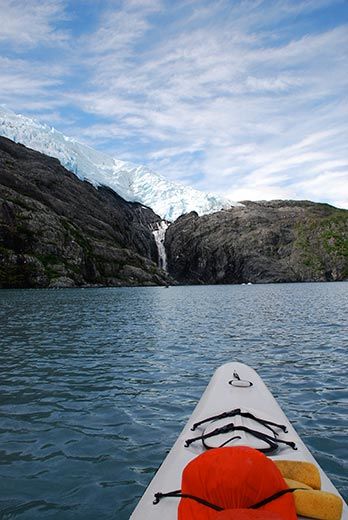
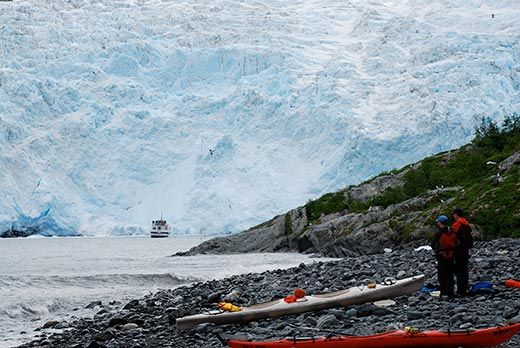
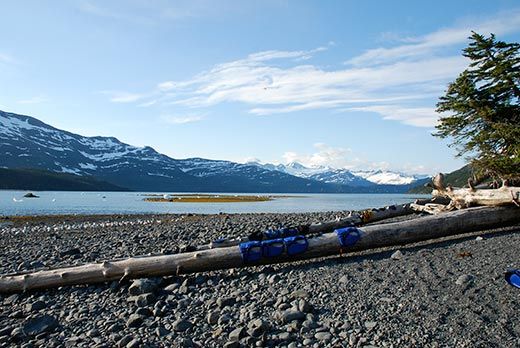
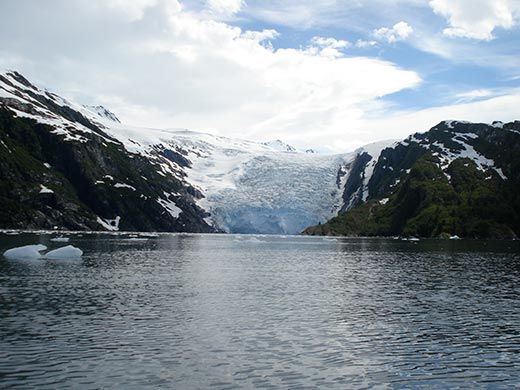
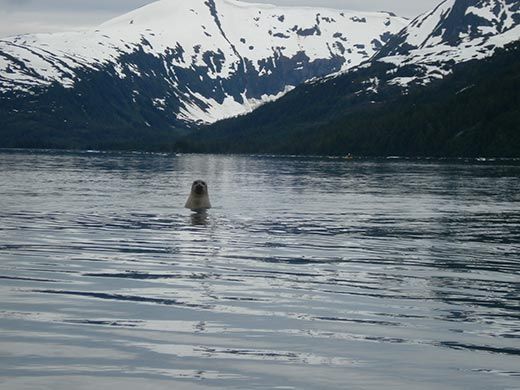
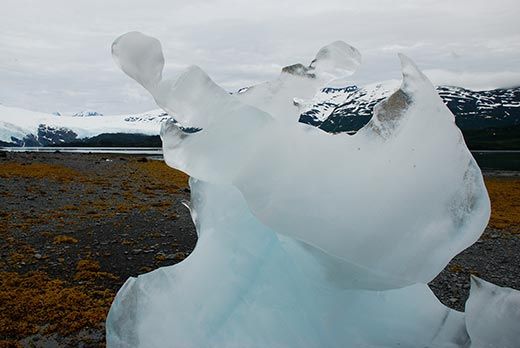
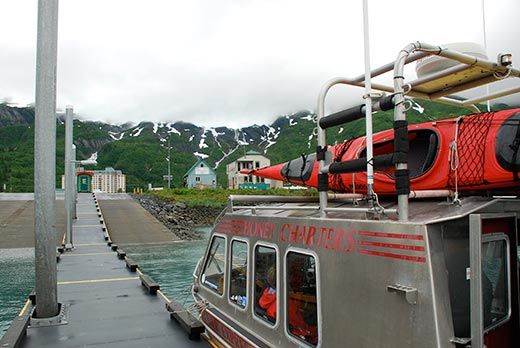
/https://tf-cmsv2-smithsonianmag-media.s3.amazonaws.com/accounts/headshot/megan.png)